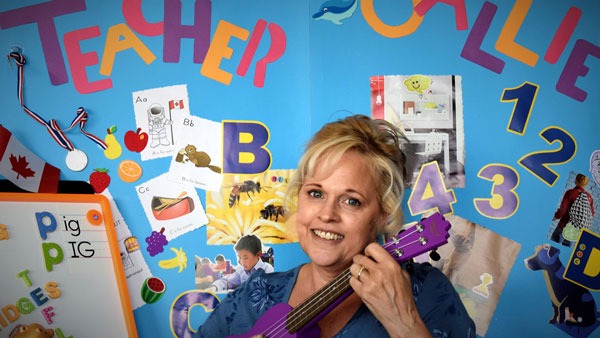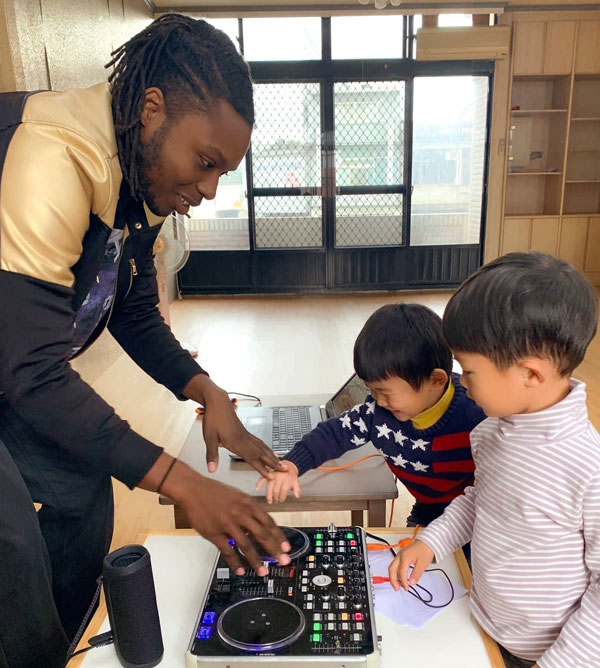If you’re a teacher, chances are that you’ve used realia at some point in your classroom and you may not have even realized it! Whether you’ve held up a real object to elicit a vocabulary word from students or brought in a special item from home to grab your students’ attention, you’ve used realia. If you are beginning to learn how to teach kids English, looking for a way to spice up your online classes, or trying to find fun activities for adult learners, using realia is a great technique to help your students learn!
If you’re new to teaching, you’ll want to get initial training and qualification with a TEFL certificate. You can explore our online TEFL courses to get started!
What is realia?
Simply put, realia refers to authentic objects from real life that one uses in the classroom to teach a specific concept. Realia can be both physical and virtual, as long as it is something used in the real world (rather than created specifically for an ESL class).

Why use realia in the classroom?
Realia for ESL can make the learning experience more memorable and create connections between objects and vocabulary words or other language concepts. This can make it easier to recall information. For in-person classes, it adds a kinesthetic element for people who learn better with hands-on activities. For online classes, it provides a visual aid to engage students. Additionally, realia is more dynamic than a written word or flashcard used to teach a concept.
What are some examples of realia?
Realia can incorporate what’s already in your classroom, such as a desk, chair, or poster. Or, it can be something you’ve brought from outside of class, like a collection of colorful brochures, a stuffed animal, tickets, or souvenirs you got while traveling. While any of these will work for both an in-person class or an online class (for the latter, simply hold the objects up to your screen), you can also make use of virtual realia in the online classroom. Virtual realia refers to authentic resources found online, such as advertisements, photographs, menus, receipts, or maps. Similar to using props to teach English online, incorporating realia into the virtual classroom engages students and makes for a livelier class.
How is realia useful to English teachers?
Realia reinforces language skills and appeals to both visual and kinesthetic learners of all ages. Most teachers use realia to demonstrate the meaning of vocabulary words. Think of the difference between teaching students the words for fruit versus showing them the real thing and having them guess the name. It’s especially helpful when teaching students whose native language (L1) you don’t speak.
How can I use realia in the ESL classroom?
ESL realia can be incorporated into a ton of fun activities that can liven up your in-person or virtual classroom and get students excited about learning English. Here are ten to get you started!
Watch an excerpt from the BridgeUniverse webinar, “Using Traditional and Digital Realia When Teaching English Online,” to learn more about how realia can engage learners.
Realia activities for young learners
1. Recreate the realia
Young students love arts and crafts, and getting them to make their own version of a newspaper, train ticket, or other realia that you’ve shown them is a great way to solidify the lesson. It helps make vocabulary memorable and gets students to apply what they’ve learned. Plus, this one can be done in both an in-person class and an online class.
2. Scavenger hunt
You can hold a scavenger hunt both inside and outside of the classroom to review a number of subjects such as nature or classroom objects. To use as a game for younger kids or beginner learners, ask them to find an item for each color or shape. This activity gets students moving and teaches them to differentiate between vocabulary words, but it also allows you to assess who has a firm grasp of the lesson and who may need additional help. It’s also a great activity for the virtual classroom, as students can quickly find objects around their own homes.
3. Following directions
One of my favorite ways of using realia is to give students directions to carry out with the objects. For instance, if you’re teaching prepositions, have students take out the items from their pencil bags, and give directions like, “Put the pencil under the eraser” or, “Put the eraser in the pencil bag.” Or, for a lesson on comparing objects say, “Hold the pencil higher than the eraser.” It’s a great way to make students active participants in the lesson. Again, this game can easily be played in both the physical or virtual classroom.
4. What is it?
Fill a bag with realia and have students take turns trying to guess what one of the objects is by putting their hand in the bag and feeling it. They can use vocabulary to describe the object to their classmates as they guess. This game can be adapted to the virtual classroom by hiding an object in a bag or under a cloth. Students can look at the shape and listen to you describe the object (e.g., it’s heavy, it’s round, etc.) while they try to guess what it is.
5. Ask students to bring in their own realia
Get to know students better by asking them to bring in several items from home that they feel represent them. If you’re teaching online, students can hold objects up to their cameras instead. Have them present these items to the class and explain why they chose each object. For a variation of this activity, have classmates guess how the objects represent their fellow students. Students love to share things about themselves and are usually excited about activities that involve getting to talk about their own lives.
Teaching ESL virtually? Bridge’s Micro-credential course in Games and Activities for the Online Classroom (Young Learners) has plenty of tips to make your class more fun.

Realia activities for teens and adults
6. Act out a scene
No matter what concept you’re teaching, acting out scenes and roleplaying is a wonderful way to help students memorize the material and encourage speaking skills through an easy activity. Try using realia to inspire the students and really get them invested in the role they’re playing.
For example, if you’re teaching a lesson focused on ordering food at a restaurant, bring in some food items and a menu and have students take turns acting out a scene in which one student is the waiter and another is the customer. Realia will help them generate lines and guide them to review essential vocabulary.
Students can act out situations in the virtual classroom as well. Tell them to bring certain items to class ahead of time, and then have them use the objects to create a dialogue with another student(s). If the teaching platform you’re using allows it, enlarge the camera feeds of the students currently acting so the rest of the class can easily see who is speaking.
7. Incorporate realia into a writing prompt
To make writing assignments come to life, bring in random objects and place them at the front of the classroom. Have students write a short story (either with or without a prompt) incorporating all or a certain number of the objects. This activity gets students to think outside of the box and reflect on how they can use the vocabulary they’ve learned in everyday life. It’s another great one for both the physical and virtual classroom as well, as you can simply hold the objects up to the screen if you’re teaching online.
8. Island survival
Bring in a handful of items and divide students into small groups. Have each group discuss which three things they would choose to have with them if they were stranded on a desert island. Have them explain why they chose each object and how they would use it. You can modify this activity by changing the number of items students can pick or by having them discuss how they could use each item you brought in. If you’re teaching online, simply turn the game into an individual activity and hold the objects up in front of your camera to show them. Students can take turns sharing their thoughts.
9. Price guessing game
Set up a row of objects (either on a desk at the front of the classroom or on a table in front of your webcam) and have students try to guess what each of the items costs. Reveal the real prices at the end of the activity. This is a great game to play to practice numbers and shopping vocabulary (e.g., how much does it cost, is it expensive, etc.). You can alter this activity to have students try to organize the objects from the least expensive to the most expensive, which can help with giving commands, vocab related to directions, and more (e.g., “Move the basketball to the left of the T-shirt”). You can also choose a theme – like groceries or clothing – for the objects in order to target specific vocabulary.
10. Memory
If you’re in a virtual classroom, quickly pass objects by the screen, one after the other. See if students can recall which objects they saw and whether they can name them in the correct order. If you’re in a physical classroom, you can set the items out on a desk and hide each object under a cloth or paper bag. Then, lift the bag/cloth for a few seconds to reveal the object. If you’re wondering how to teach vocabulary, this is a great activity, as you can choose items from a specific theme/category (food, sports, objects that are different shapes or colors, etc.).





